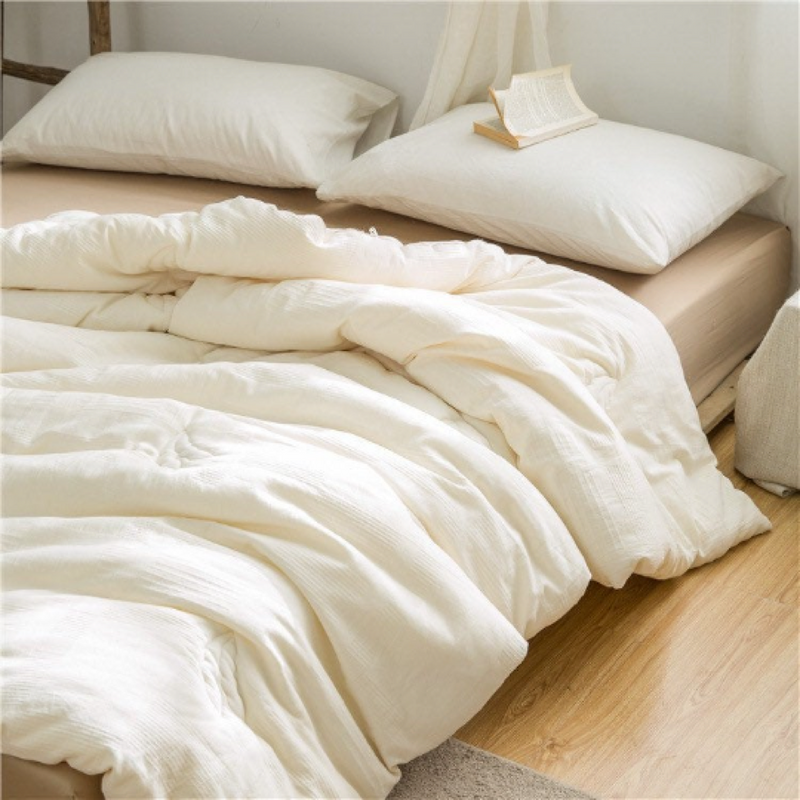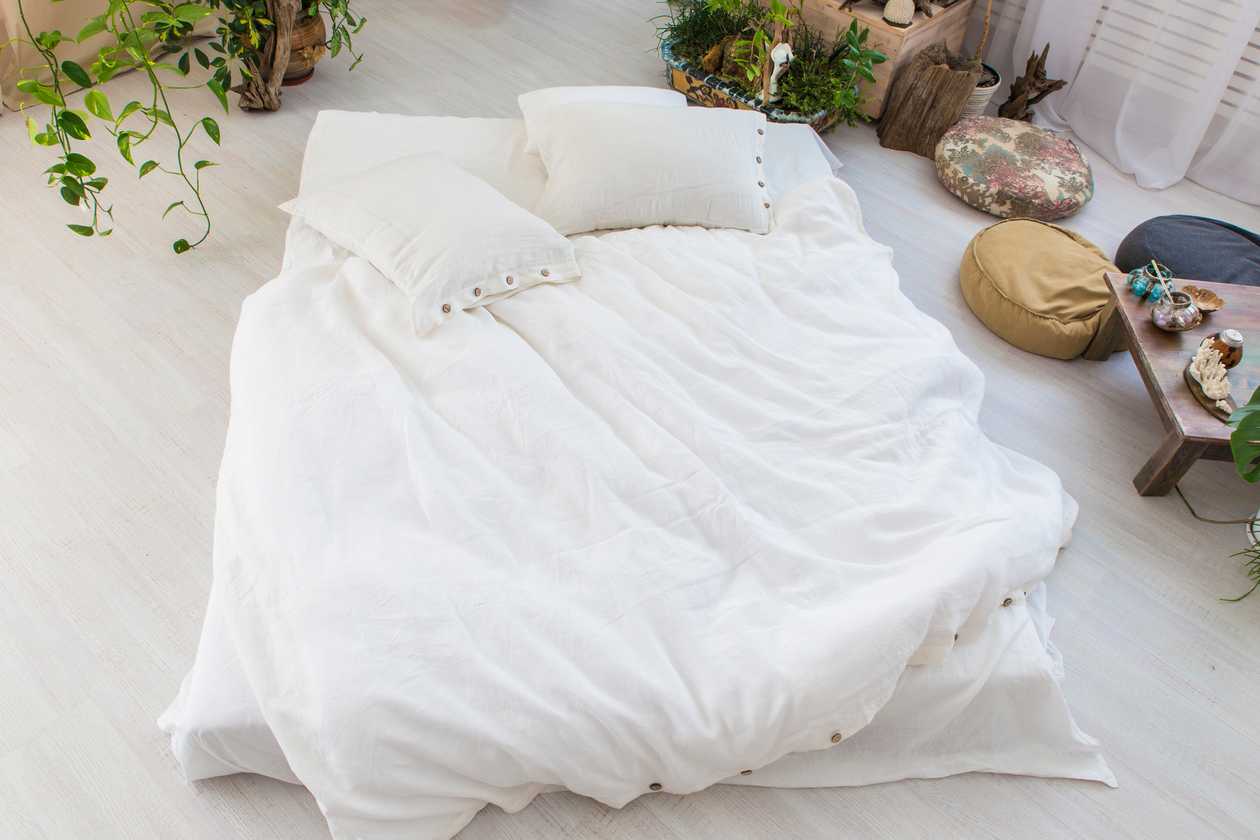Finding the perfect duvet cover to beat the heat can feel like a quest for the Holy Grail during those sweltering summer nights.
But fear not! This guide is your roadmap to discovering the coolest, most comfortable luxury duvet cover materials that promise to transform your bed into a breezy sanctuary. Plus, we’ve sprinkled in some nifty tips to keep you chill all night long.
Why Breathability and Moisture-Wicking Are Your Best Friends
First things first, let’s talk about what makes a fabric “cool.” It’s all about breathability and moisture-wicking. Imagine your duvet cover as a lightweight, airy outfit for your bed, one that lets air circulate freely so you don’t end up stewing in your own heat. And just like a good workout tee, your duvet cover should be a pro at pulling sweat away from your skin, keeping you dry and cool as a cucumber.

Cotton as the Go-To Classic for Luxury Duvet Covers
Cotton is the old reliable of cool bedding materials. It’s like that breezy white tee you reach for on a hot day—simple, effective, and oh-so-comfortable. Egyptian and Pima cotton are the VIPs in this category, offering a silky smoothness and top-notch air flow that help you keep your cool.
Linen: The Cool Kid on the Block
Linen is like that effortlessly cool friend who always seems to stay composed, no matter the heat. Made from the flax plant, linen is a natural wonder at wicking away moisture and encouraging airflow. It gets softer with every wash, but it does come with a bit of a “lived-in” look that might not be everyone’s cup of tea.
Microfiber as the Easy on the Wallet Luxury Duvet Cover Material
Microfiber is the budget-friendly contender, offering a soft, moisture-wicking surface at a fraction of the cost. It’s not as breathable as natural options, but for those watching their pennies, it’s a solid choice for cooler sleep.
Tencel: The Newcomer in the World of Luxury Duvet Cover
Tencel, a.k.a. Lyocell, is the new kid on the block, made from wood cellulose. It’s eco-friendly, super soft, and boasts excellent moisture-wicking abilities. Tencel is kind to your skin and keeps you cool, making it a great choice for those looking for something a little different.
Jersey: Like Your Favorite Tee
Jersey is the casual, comfy luxury duvet cover option, reminiscent of your favorite t-shirt. It’s not the coolest kid around, but its soft, stretchy nature makes it a cozy choice for those who prioritize comfort.

Percale vs. Sateen: The Weave Makes a Difference
Not all weaves are created equal when it comes to staying cool. Percale is your go-to for a crisp, breathable feel, much like a fresh cotton shirt. Sateen, with its silky smoothness, tends to hold in heat, making Percale the winner for warm nights.
Silk: The Luxury Duvet Cover Choice
Silk is the diva of the luxury duvet cover option – smooth, and surprisingly cool. It’s a natural temperature regulator, which means it can keep you cool in the summer and cozy in the winter. Silk is gentle on the skin and hypoallergenic but be prepared for a bit of pampering because this material demands delicate care.
Outlier Alert: Outlast Luxury Duvet Cover Technology
Now, for something a bit different—fabrics infused with Outlast technology. Originally developed for NASA, this material absorbs, stores, and releases heat, actively regulating your body temperature and ensuring you stay cool throughout the night. It’s a space-age solution for those particularly hot sleepers.
Extra Tips to Beat the Heat
Choosing the right duvet cover is just the start. Here are some extra strategies to keep your cool:
- Light colors are your allies; they reflect heat instead of absorbing it.
- Swap out your duvet for a lighter insert or even just a sheet when the mercury rises.
- Keep the air moving with fans or air conditioning.
- Pair your cool duvet cover with moisture-wicking sheets for double the effect.
- Darken your room with blackout curtains to block out heat-inducing sunlight.
- Stay hydrated—it helps your body regulate temperature.
- A warm shower before bed can surprisingly help cool you down afterward.
- Skip the heavy meals and caffeine before bedtime to avoid internal heat spikes.
- Consider gel cooling pads or special pillows to draw heat away from your body.
Closing Thoughts
In the quest for the coolest night’s sleep, the best duvet cover material for you boils down to personal preference and priorities. Whether you lean towards the natural elegance of cotton and linen, the luxury of silk, or the innovative cool of Tencel and Outlast® technology, there’s a perfect option out there for you. Remember, the weave matters too, with percale taking the crown for breathability. Mix and match these materials with our cooling tips, and you’re all set for a restful, cool night’s sleep, even when the temperatures soar.






